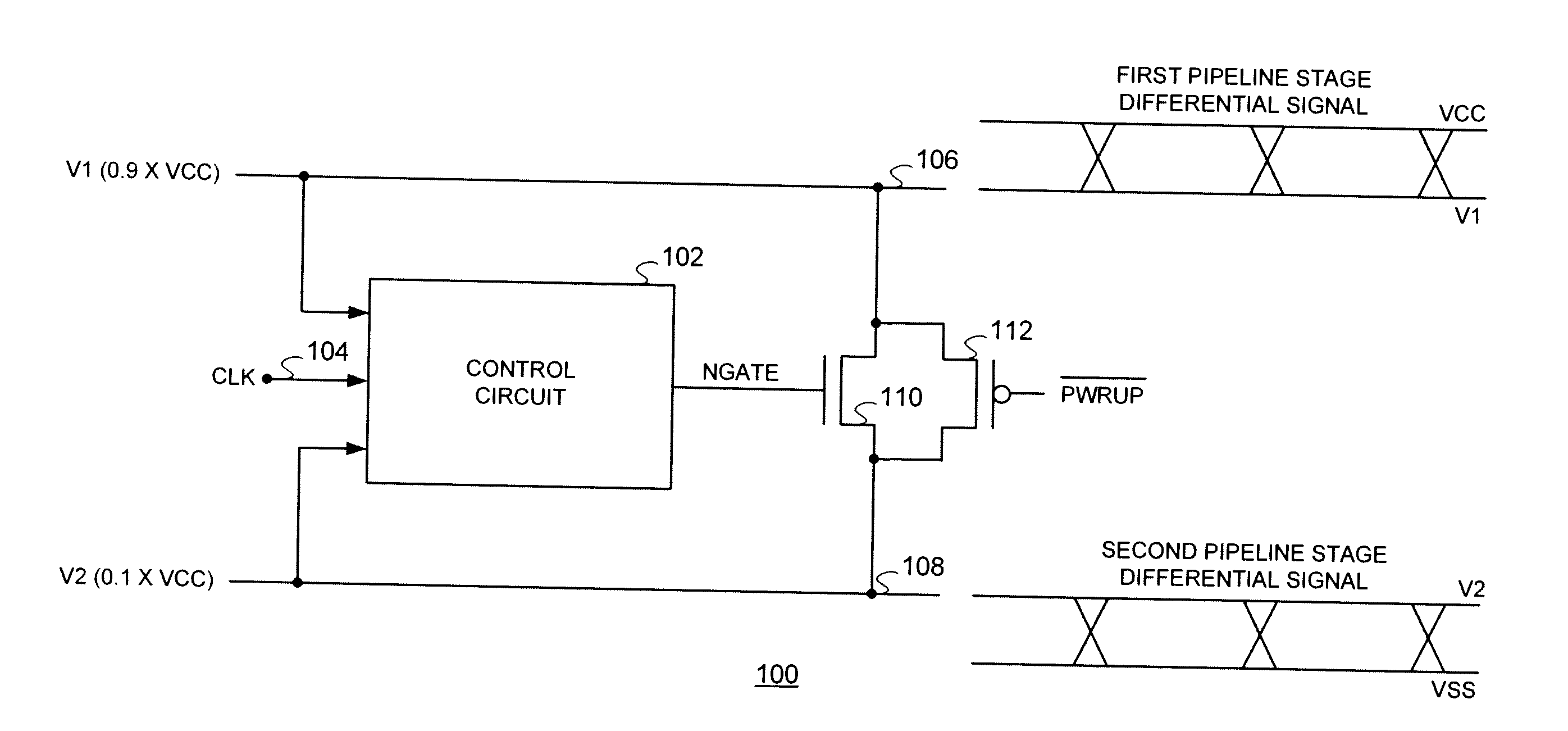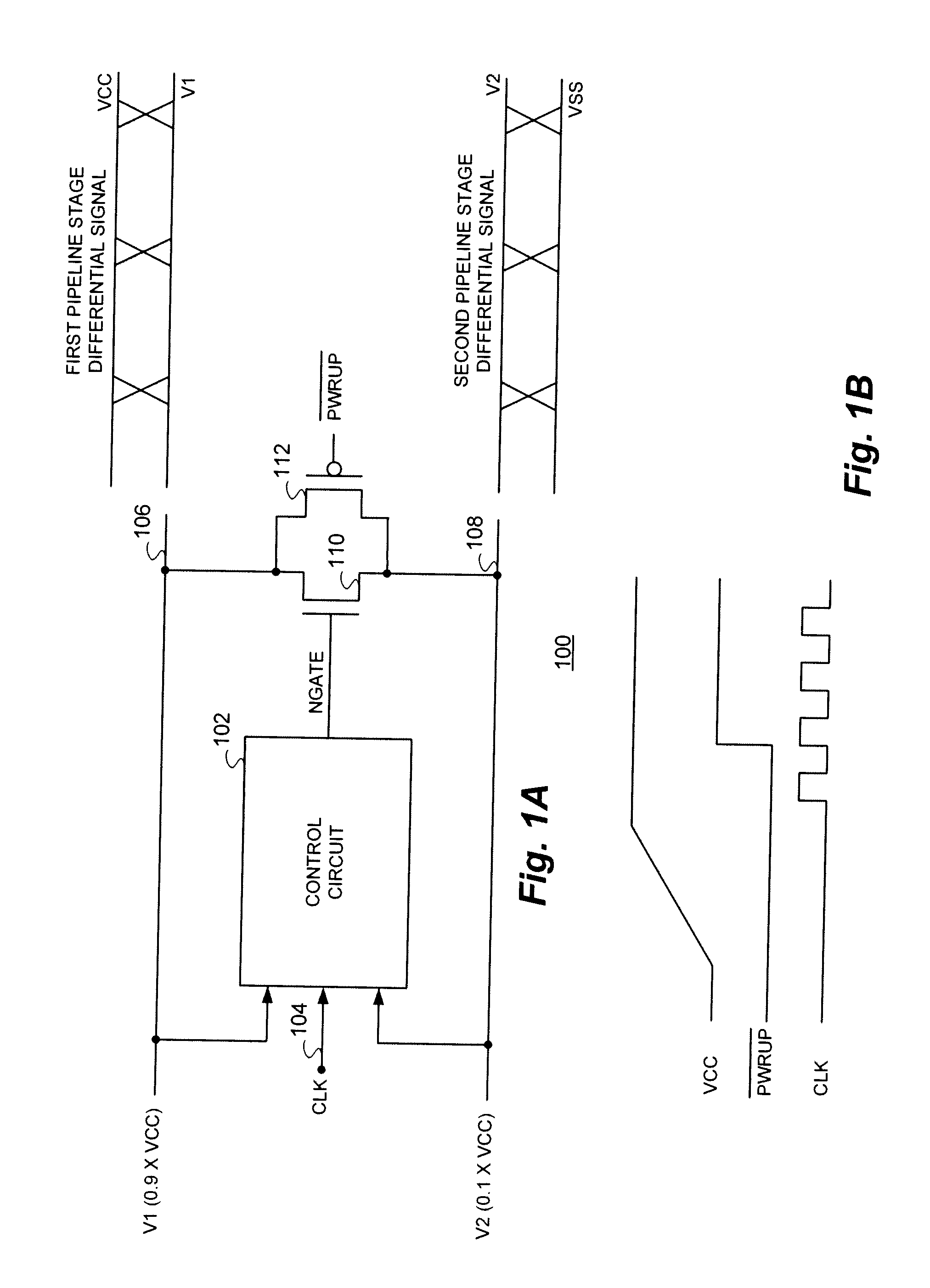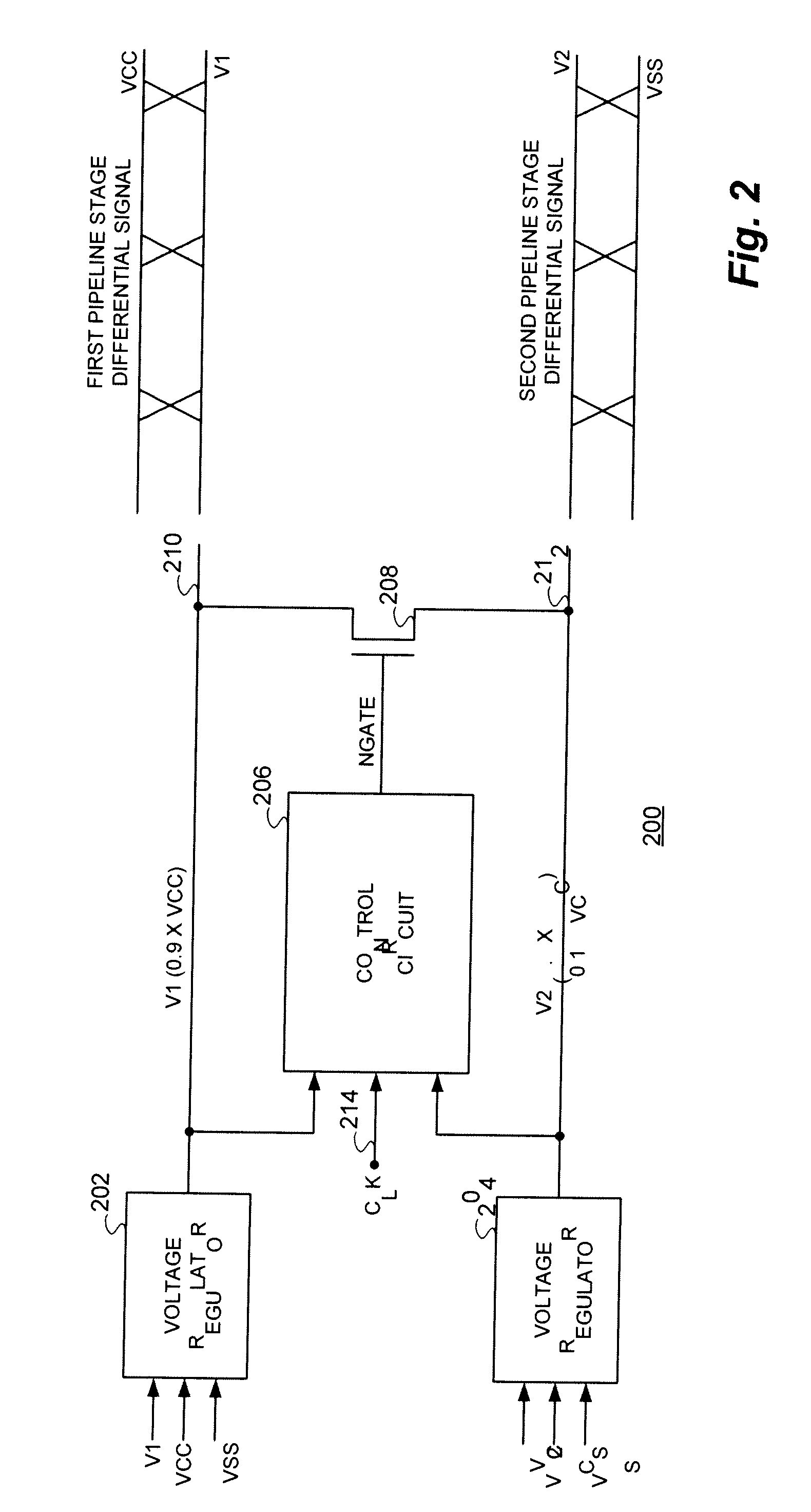Short-circuit charge-sharing technique for integrated circuit devices
- Summary
- Abstract
- Description
- Claims
- Application Information
AI Technical Summary
Benefits of technology
Problems solved by technology
Method used
Image
Examples
Embodiment Construction
[0018]With reference now to FIG. 1A, a functional block diagram of a representative circuit 100 implementation of the short-circuit charge-sharing technique of the present invention is shown. The circuit 100 receives a voltage level V1, which in the exemplary implementation shown is substantially equal to 0.9×VCC and a voltage level V2 substantially equal to 0.1×VCC.
[0019]The V1 and V2 voltage levels are supplied on lines 106 and 108 as inputs to a control circuit 102. An exemplary implementation of the control circuit 102 will be described more fully hereinafter. The control circuit 102 also receives a clock (CLK) signal input on line 104 and is operational to provide a gating signal to the control terminal of transistor 110 which is coupled between lines 106 and 108. In the representative embodiment of a circuit 100 in accordance with the technique of the present invention illustrated, transistor 110 is illustrated as an N-channel device. Transistor 112 is illustrated as a P-chann...
PUM
 Login to View More
Login to View More Abstract
Description
Claims
Application Information
 Login to View More
Login to View More - R&D
- Intellectual Property
- Life Sciences
- Materials
- Tech Scout
- Unparalleled Data Quality
- Higher Quality Content
- 60% Fewer Hallucinations
Browse by: Latest US Patents, China's latest patents, Technical Efficacy Thesaurus, Application Domain, Technology Topic, Popular Technical Reports.
© 2025 PatSnap. All rights reserved.Legal|Privacy policy|Modern Slavery Act Transparency Statement|Sitemap|About US| Contact US: help@patsnap.com



